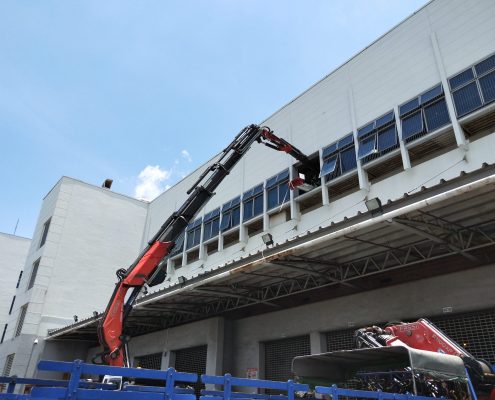

The buildings will be the first ground-up industrial buildings to be built in the business park since 2008.ĬT/Prudential’s new $25 million development project will encompass five, Class A industrial buildings totaling 205,000 square feet and will be available for sale starting fourth quarter 2015. According to Keith Ross, executive vice president of development for CT Realty, the parcel represents one of the few remaining sites available for industrial development in the business park which enjoys an exceptional location near the Interstate 215/60 freeway interchange. The CT/Prudential site is located within the 1,400-acre Sycamore Canyon Business Park on the northwest corner of Dan Kipper Drive and Sycamore Canyon Boulevard. CT/Prudential acquired the land from a major financial institution for an undisclosed sum in Q3 2014. In its first acquisition, the joint venture has purchased 13.1 acres of land in Riverside, Calif., and plans to develop five industrial buildings on the property. (SOUNDBITE OF MUSIC) Transcript provided by NPR, Copyright NPR.CT Realty and Prudential Real Estate Investors have formed a $120 million joint venture that will focus on development of industrial buildings for sale in Southern California. For NPR News, I'm Gloria Hillard in Ontario, Calif. Bekendam has three years remaining on his lease. The owner of the land he farms recently sold it to a developer. And let's rethink what we really need for the future. And for certain, don't pave prime farmland. HILLARD: Farmer Randy Bekendam, along with the group Ontario for Agriculture, is trying to block the new logistics center with a referendum, which they hope to place on this fall's ballot.īEKENDAM: Let's pause. But it is disappointing because you're going to see all this disappear.īEKENDAM: So it's a fight that has to be fought. SMITH: I think we're all guilty of utilizing, you know? Like, that huge Amazon warehouse that went up, I use Amazon every day, you know? So we're all guilty of it. REGINA SMITH: It's like one warehouse after the next, after the next. HILLARD: But to some residents, those other uses are heading in the wrong direction. SCOTT MURPHY: The desire was to see this area transition from agricultural use to other uses. Scott Murphy is the city's executive director of community development. HILLARD: City planners say the decision to move away from agriculture in that area of Ontario was made nearly 25 years ago. KROTTS: We're constantly monitoring the political climate of all of our cities that we have projects in. HILLARD: The land, a former dairy with knee-high grass and abandoned barns, became the focus of community backlash after the city modified zoning, paving the way for Krotts' project. KROTTS: Between our three project phases, our projects, once stabilized and fully built out, will create almost 34,000 jobs. His latest venture is a 150-acre project called the South Ontario Logistics Center. HILLARD: Jason Krotts is the managing principal of Real Estate Development Associates. JASON KROTTS: Well, I think there's a lot we bring. There's so many detrimental effects to it that it is a tremendous worry that we've invested so heavily in that infrastructure.

HILLARD: Susan Phillips is the director of the environmental conservancy at nearby Pitzer College. SUSAN PHILLIPS: I don't think anybody realizes what the cumulative impact is going to be. HILLARD: A line of 18 wheelers Dosey Doe at every four-way stop. To show me, we get into his truck and drive a few minutes away.īEKENDAM: Just a line of warehouse. HILLARD: And, Bekendam says, transitioning away from what once was agriculture for as far as the eye can see to a different picture. School teachers and parents bring kids here to see the animals and how things grow, like the long, even rows of broccoli and beets.īEKENDAM: Right now, we're transitioning from cool weather crops into some warmer weather crops. HILLARD: Residents of the city of Ontario come here to buy organic fruits and vegetables. RANDY BEKENDAM: So the chickens are in the orchard to keep the weeds down. The 69-year-old has been leasing and farming this land for more than 15 years. GLORIA HILLARD, BYLINE: At the end of a small dirt road, visitors to Randy Bekendam's farm are greeted by two cows, the color of butterscotch. The logistics industry is changing what was once an agricultural landscape into an industrial one. There's a land rush going on in the part of California, east of Los Angeles, known as the Inland Empire.


 0 kommentar(er)
0 kommentar(er)
